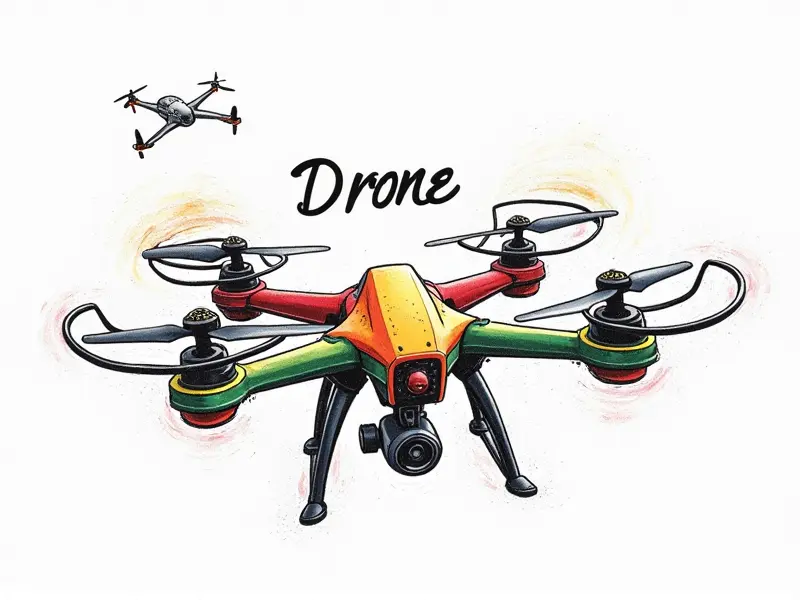RC helicopter blades?

RC Helicopter Blades: The Ultimate Guide
Welcome to our comprehensive guide on RC helicopter blades! Whether you're a seasoned hobbyist or just starting out, understanding the nuances of RC heli propellers is crucial for achieving optimal performance. In this article, we'll delve into various aspects of RC helicopter blades, from materials and durability to flight time optimization and quiet operation.
Top 5 RC Helicopter Blade Materials
The material used for your RC helicopter blades significantly impacts its overall performance. Here are the top five options:
- Kevlar: Known for its exceptional strength-to-weight ratio, Kevlar blades offer superior durability and resistance to damage.
- Glass Fiber Reinforced Plastic (GFRP): GFRP blades are a popular choice due to their balance of stiffness and flexibility. They provide excellent performance at an affordable price point.
- Balsa Wood: Balsa wood is light, flexible, and easy to shape, making it ideal for custom blade designs or DIY projects.
- Carbon Fiber: Carbon fiber blades are extremely lightweight yet incredibly strong. They're the go-to choice for high-performance applications.
- Polypropylene: Polypropylene blades offer a good balance between cost and performance, providing durability without breaking the bank.
Upgrading Your RC Heli's Propellers
Choosing to upgrade your RC helicopter’s propellers can dramatically improve its flight characteristics. Here are some key factors to consider:
- Blade Pitch: A higher pitch angle will provide more lift and speed but may reduce maneuverability.
- Material Quality: Upgrading from less durable materials like plastic to carbon fiber or Kevlar can enhance the heli's performance and longevity.
- Aerodynamic Design: Modern blade designs often incorporate advanced aerodynamics, such as swept-back tips or airfoil profiles, which can increase efficiency.
Maximize Flight Time with Props
To extend your RC helicopter's flight time, selecting the right propellers is crucial. Here are some strategies:
- Select Efficient Blades: Opt for blades designed to minimize drag and maximize lift.
- Balanced Propellers: Ensuring that your propellers are perfectly balanced can reduce energy waste, thereby increasing flight duration.
- Optimal Pitch Angle: Adjusting the pitch angle appropriately for your specific model will optimize power usage and battery efficiency.
Silent RC Helicopter Blades Review
If noise reduction is a priority, there are several options available that cater to this requirement:
- Aerodynamic Design: Propellers with swept-back tips or specially designed airfoils can significantly reduce sound levels.
- Dampening Materials: Incorporating materials like rubber inserts can absorb vibrations and lower noise output.
DIY RC Helicopter Blade Tips
Making your own blades can be a rewarding project for hobbyists. Here are some tips to get you started:
- Material Selection: Choose materials that suit both the performance needs and budget constraints of your project.
- Design Considerations: Focus on creating an aerodynamically efficient shape, paying attention to factors like blade pitch and profile.
- Testing and Iteration: Regularly test your blades during construction to fine-tune their performance before finalizing the design.
Choosing the Right RC Helo Blades
The selection process for RC helicopter blades involves careful consideration of several factors:
- Heli Model and Size: Different models have specific requirements in terms of blade size, pitch, and material.
- Purpose of Use: Consider whether you need high-speed performance or silent operation for your particular application.
Budget-Friendly RC Helicopter Blades
For hobbyists on a budget, there are numerous affordable options available that still deliver good performance:
- Polypropylene Blades: These offer a great balance between cost and durability.
- GFRP Propellers: Glass fiber reinforced plastic blades provide excellent value for their price point.
Durability in RC Helicopter Blades
Selecting durable propellers is essential for long-term enjoyment of your hobby. Consider the following:
- Material Strength: Choose materials known for their resistance to damage and wear.
- Manufacturing Quality: High-quality manufacturing processes ensure consistent performance over time.
How to Replace RC Helo Blades
Maintaining your heli’s blades is crucial. Here's a step-by-step guide on how to replace them:
- Disassemble the Heli: Carefully remove any components covering the propeller assembly.
- Loosen and Remove Old Blades: Use appropriate tools to loosen and carefully remove the old blades.
- Install New Blades: Align new blades with the hub, ensuring they are properly balanced before securing them in place.
Fastest RC Helicopter Blades Available
If speed is your goal, here are some of the fastest RC helicopter propellers on the market:
- High-Pitch Carbon Fiber Blades: These blades offer maximum lift and thrust for high-speed performance.
- Aerodynamically Optimized Designs: Propellers designed with advanced aerodynamics can significantly increase top speed.
Quietest RC Helicopter Blades Review
To achieve silent operation, consider these options:
- Swept-Back Tip Design: This design reduces noise by minimizing turbulence at the blade tips.
- Dampening Inserts: Adding rubber or foam inserts can help absorb vibrations and reduce sound output.
Conclusion
In conclusion, choosing the right RC helicopter blades is crucial for achieving optimal performance, durability, and quiet operation. By considering factors such as material quality, aerodynamic design, and manufacturing standards, you can select propellers that best suit your needs and budget. Whether you're upgrading an existing heli or building a new one from scratch, investing in high-quality propellers will enhance the overall flying experience.

